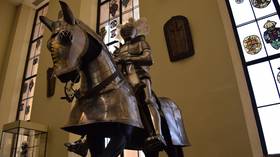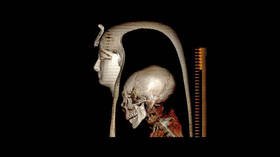Study reveals real size of medieval English warhorses

Despite popular depictions of English medieval warhorses as giant steeds, new research suggests that most mounts of the era were only as big as modern-day ponies – with movies and books playing up the myth of their stature.
The study, published in the International Journal of Osteoarchaeology, found that chargers used by English knights stood at less than 14.2 hands (about 57 inches) high.
The ancient ‘hand’ unit of measurement, specific to horses, measures equine height from the ground to the top of the shoulder. Only animals taller than that benchmark are classified as ‘horses’ by modern standards.
A team of archaeologists and historians analyzed around 2,000 skeletal remains from 171 different historic sites, including castles and a medieval horse cemetery, across the UK, dating from the fourth to the 17th centuries. The researchers also looked at historical records as well as fictional accounts of the era.
The study found that horses standing at 15 to 16 hands, roughly the size of modern racehorses and showjumpers, were “very rare indeed.” Even in the royal stables of the 13th and 14th centuries, such animals would apparently have been thought of as “very large.” However, fictional depictions of the period typically portray these mounts using animals as high as 18 hands (about 72 inches).
Among the biggest remains found by the team was a 15-hand-tall horse from the Norman period between the 11th and 12th centuries. Its stature would put the animal at about the size of a small light riding horse today.
“It turns out that things are not quite as they have usually been portrayed. In popular culture, warhorses are often depicted as the size of a shire horse [a large load-pulling breed]. It really wasn’t like that,” Alan Outram, an archaeologist at the University of Exeter, told The Guardian.
The study suggests that warhorses were bred not for “raw size” alone, but for a mix of biological and cultural factors, as well as behavioral characteristics such as “temperament.” While there might have been large specimens, Outram said armies would have also needed smaller horses for long-distance raids and to transport equipment.
The researchers noted that it was not until the post-medieval period that the average height of horses approached something comparable to modern-day draft animals.













